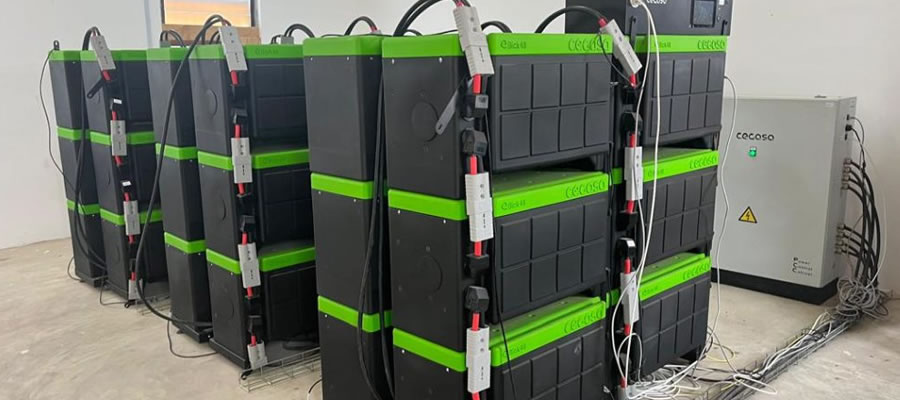

Local Industrial Sector
In most developing countries, expansion of industry- normally agro-based domestic industries where the potential exists enormously- offers prospects of increased employment, an improved balance of payments, enhance more efficient use of resources and most importantly acts as a stopgap measure to trends in migration. The focus of government as far as the long-term Medium-Term Development Policy Framework is concerned, is to place Ghana on the path of industrialization by 2021.
One of the key elements identified to significantly drive this vision is the modernization of agriculture and the development of agro-based industrial economy. Over the years, it has been realized that, the industrial sector has a sentimental attachment to other sectors of the economy most especially agriculture.
In 2005, Ghana achieved an industrial growth of 5.6 per cent exceeding the previous year’s growth rate by 0.5 percentage point. Besides all these remarkable achievements, proponents still concluded that, the growth in the industrial sector has fallen short of the level required to make progress towards the attainment of the Millennium Development Goals.
All these analyses point to the significance of the industrial sector to every developing sector. On the contrary however, the gap between industrial growth and agricultural development is wide in the Ada East District. As stated earlier, the District holds an extreme potential in the development of agriculture yet, the necessary industrial – basically Agro-Based Small-Scale industries- capacity required to facilitate increased production rarely exist. The only industrial sub-sectors that the district can boast of are salt mining and river sand winning.
Songhor Salt Project
The Songhor Salt Project is the major mining sector of the district. Located on the Songhor Lagoon, the project covers a total land area of about 12,500 acres. In 2004, the Project employed a total labour force of about 300 and produces about 90,000 metric tonnes of salt annually to meet the demands of both the local and international markets in Togo, Burkina Faso, Mali, Nigeria, Niger among other places.
The 90,000 metric tonnes have fallen short of the production capacity of 2 million metric tonnes leaving a backlog of about 1.9 million metric tonnes annually. Under full production capacity, the project is expected to generate more than 1,500 employments to the youth.
However, since the split of the then Dangme East District into Ada East and West Districts, Ada East District which now host the old District have lost greater part of the Songhor lagoon resources in terms of the revenue flow, leaving the district struggling with internal revenue generation(IGF). It is worthy to note however that, the portion of the Lagoon within the jurisdiction of Ada East District has the ability to produce the best quality of natural salt than the Ada West portion but it lacks the needed development infrastructure for the tapping of this great potential which has the opportunity of creating massive jobs for our teaming youth.
Aside all the numerous benefits of the Songhor Salt Development Project, feasibility studies and empirical evidence have adjudged the industry to have tremendous capabilities of fuelling the proposed Petrochemical Industry including the production of Caustic soda, Chlorine, PVC Pipes etc. The industry also holds a brighter future for the current oil finds in Ghana. However, the mind-boggling complexities as a result of conflict over the ownership of the Songhor resource area present a wide myriad of problems bedevilling the development of the Project.
Sand Wining
Apart from the Songhor Salt Development Project, large Sand winning also forms part of the domestic industries in the district. One of the notable factors is that, these potentials are supporting housing development in the Ada East and beyond; because they are produced at cheaper costs.
Apart from cement and roofing sheets which are imported into the district, there are a wide deposit of sand which is being harnessed on a large scale in the district.
The Volta River meanders slowly into the sea at Ada-Foah after being used extensively by the Akosombo and Kpong Hydro Dams to generated electricity. Over the years however, the trend has altered significantly. It has become well known that, the expected rate of flow had reduced drastically. The Volta River Authority, upon this realization mounted a serious search into the cause of the problem.
After a lengthy investigation and analysis, it became conspicuous that, there was a huge deposit of sand at the entering point of the river, permitting the sea to overshadow the river and forcing it back. The process has been described to have been characterized by a speedy flow beneath the Volta River as it gets closer to the sea. This enables it to carry huge deposit of sand along through to the Estuary. The phenomenon has been described to be the brain behind the high rate of Bilharzia infections and the warm conditions which normally engulf the District Capital- Ada-Foah and its suburbs.
In order to ameliorate this problem therefore, the Volta River Authority has found it more prudent to establish a dredging unit close to the Estuary in order to dredge the huge pack of sand from time to time so that, the water can safely meander into the sea; hence a stop gap to the disruption of the ecosystem dependent upon by plants, animals and human beings. As stated earlier, the activity has generated employment for the youth and subsequently reduced the cost of building materials in the district.
There are small-scale sand winning activities going on in the district. Crucial of the activities are those wining sand along the coast. Apart of reclamation in several communities such as Tamatoku, Amlakpo and Kewunor the coastal line also needs a serious concern.
To rescue the situation, the Government of Ghana secured a loan facility of about €68 million and had since implemented an Emergency Coastal Restoration Project. Again, the district played a cardinal role to ensuring that, all the necessary stakeholders had been incorporated adequately in the project.
The District is advocating for the establishment of an Environmental Protection Agency office to fast track efforts by liaising with the Wildlife Division as well as the Volta River Authority to ensure that, environmental requirements and regulations are strictly adhered to.
Market Infrastructure
The long-term vision of developing an agro-based industrial economy will not materialized if appropriate production and distribution systems are not properly designed. Marketing provides the basic channels through which production can be strongly sustained. In the Ada East District, access to market infrastructure is difficult and inadequate as the number of available market infrastructure. Following the collapse of the Ada-Foah Market, the Kasseh Market developed strongly and remained as the only surviving market of the district.
The market attracts people from neighbouring Districts: North Tongu, Shai Osudoku, South Tongu, Tema Metropolis, Ashaiman Municipal as much as Yilo and Manya Krobo Districts in the Eastern Region and also statistics has it that traders come from Togo to sell maize and also buy fish in return. In the like manner, the market analysis indicated that, the exogenous commodities emanate from most of the neighbouring Assemblies especially from Accra and Tema Metropolis and well as the Ashaiman Municipality.
However, the analysis concluded that, the volume of endogenous commodities, mostly foodstuffs, which flows out of the district, is greater than the exogenous commodities. The district relies on these neighbouring districts for the purposes of industrial goods, which it does not have the capacity to produce. Largely, the volume of foodstuffs emanating from other districts onto the market at Kasseh is extremely negligible.
Date Created : 11/16/2017 7:59:33 AM












 facebook
facebook
 twitter
twitter
 Youtube
Youtube
 +233 593 831 280
+233 593 831 280 0800 430 430
0800 430 430 GPS: GE-231-4383
GPS: GE-231-4383 info@ghanadistricts.com
info@ghanadistricts.com Box GP1044, Accra, Ghana
Box GP1044, Accra, Ghana